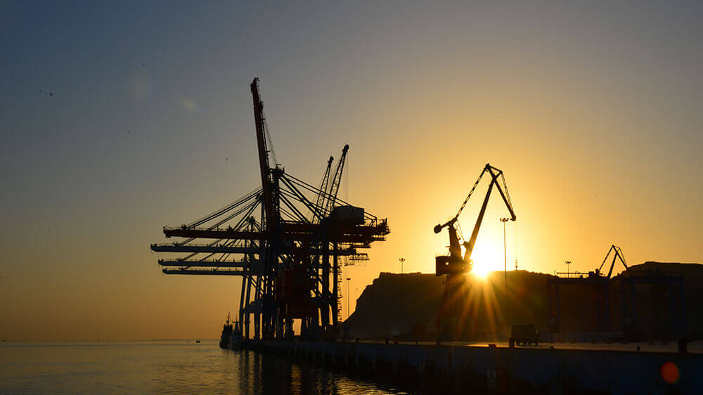Gwadar Port Project Costs Increase Four Fold

Photo Credit: Gwadar Port Authority
Initially estimated at PKR1 billion (GBP 3.1 million) in June 2022, the desilting operations at Pakistan’s Gwadar Port have since been recalculated to nearly five times the original estimation submitted by the China Harbour Engineering Company Ltd. The project, currently estimated at PKR 4.7 billion (GBP 14.1 million), will re-establish 14.5 metres of the natural and original operational depth of Gwadar Port.
This estimation accounts for the large build up of clay, mud and sand sediment in the 4.7km long navigational channel, basin and berthing area of Gwadar Port. The increased sedimentation throughout the port since the last major dredging project in 2015 has caused it to lose its natural depth, as of date of publication it is sitting at an estimated 11.6 metres as opposed to 14.5 metres for the outer navigational channel and 13.8 metres for the inner navigational channel and turning berth.
With build-up already having caused the diversion of a large vessel, the port is currently only capable of supporting vessels of 30,000 deadweight tonnage (DWT) as opposed to its initially designed capacity of 50,000 DWT. This poses a significant issue as Gwadar Port is a key component of the China-Pakistan Economic Corridor project, which is currently in its 10th year and a key part of China’s Belt and Road Initiative (BRI).
The dredging project ensures that the Gwadar Port Authority (GPA) is able to meet its contractual obligations to the China Overseas Ports Holding Company Ltd. These involve ensuring that the port channel is a safe zone, preventing claims and losses, and meeting international shipping market requirements. Additionally, the dredging project would ensure the safe navigation of vessels in ports, allowing for compliance with International Maritime Organisation (IMO) mandates.
While the advice given in this editorial content has been developed using the best information available, it is intended purely as guidance to be used at the user’s own risk. No responsibility is accepted by CEDA or by the Intent Communications Ltd or by any person, firm, corporation or organisation who or which has been in any way concerned with the furnishing of information or data, the compilation, publication or any translation, supply or sale of this Guidance for the accuracy of any information or advice given herein or for any omission herefrom or from any consequences whatsoever resulting directly or indirectly from compliance with or adoption of guidance contained therein even if caused by a failure to exercise reasonable care.